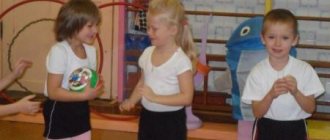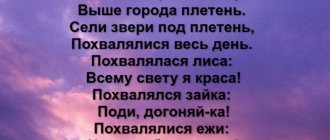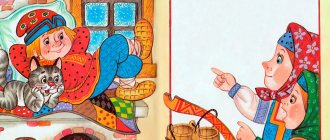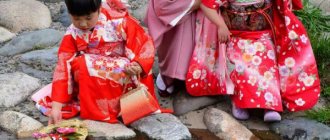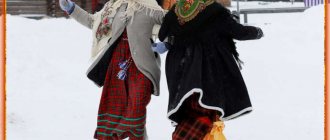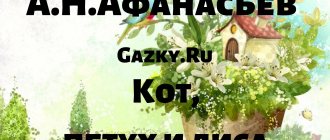Russian folk toy is an important ethnic element and a monument of traditional culture of the Russian people. It is a synthetic type of folk art, which combines the means of decorative, applied and fine arts, and musical elements. A toy is also a traditional element of child rearing. Children learn about the world and socialize in society through play. Traditional folk toys vary in type, material and manufacturing method. In addition, there is a relationship between folk toys and different types of economic activity of people, tools and religious beliefs. The folk toy was an important element in the socialization and education of children.
Kargopol Russian folk toy
Russian folk toys are attractive for their ambiguity, depth, symbolism of the image, decorativeness, brevity, sense of the material and its natural properties, traditional technological techniques, conventionality of images and much more. Folk toys depict people, fauna objects: birds, deer and elk, bears, horses, goats and other animals. Russian traditional toys are made mainly from clay, wood, straw and birch bark.
Dymkovo Russian folk toy “Water-carrier”
Russian folk toys have different symbols. For example, a toy in the shape of the sun, a rocking horse, or a swing is a symbol of well-being. A toy in the shape of an egg, a rooster - a symbol of the sky. The deer symbolizes sunlight, peace on earth and a happy marriage. The bear is a symbol of strength and wealth.
Russian folk toy made of clay and wood
Over the centuries, residents of a certain region have created and passed on from generation to generation original traditions of making folk toys, which were unique, original and combined the national characteristics of a certain region of Russia. By the external features of the Russian folk toy, one could understand in which particular area it was made.
Bogorodskaya Russian folk toy made of wood
As mentioned above, toys were mainly made from two materials: clay (Abashevskaya, Dymkovskaya, Kargopolskaya, Pleshkovskaya and Filimonovskaya toys) and wood (Bogorodskaya Mazykskaya toy, matryoshka, bird of happiness).
Variety of products
In the photo of folk crafts, first of all, what catches the eye is the variety of work performed, the abundance of colors and paints, and the expression of folk culture in the products. It can be:
- Figures and paintings made of straw, clay, salt dough, wood;
- Crafts and toys made from scraps, yarn, paper;
- Models of huts, churches, Russian stoves;
- Khokhloma painting;
- Dymkovo toys.
Abashevskaya Russian folk toy
Abashevo Russian folk toy is made of clay. Its name comes from the village of Abashevo, Penza province. In the 19th–20th centuries. The best pottery masters lived in the village of Abashevo, whose works were valued throughout Russia. In the Penza province, in the village of Abashevo, there were rich deposits of clay, which was originally used to make beautiful dishes. Abashevo toys were first made in the mid-19th century for children's games. But after a while, the toys began to be given a satirical character, with the aim of ridiculing liars and those who profit from their neighbors.
The peak of development of the Abashevo toy came in the 20th century, when many craftsmen in making dishes from clay could no longer compete with factories. It was during this period that most craftsmen began making whistles, which aroused genuine interest and even delight among children. One of the famous masters of that period was Timofey Zotkin . His works had a significant influence on subsequent generations.
Abashevskaya Russian folk toy
The subjects of Abashev's toys are varied, among the main ones are animals and birds, the main feature of which is an overly long body with a neck and short legs. Animals were often depicted with lush curls and beards. Mostly they sculpted rams, deer, and goats. In appearance they resemble fantastic centaurs, which are characterized by some satire. Abashevo's toy is designed to ridicule human vices, especially love of money and deception. That is why, along with unusual animal figures, you can see an elegant young lady, a dashing horseman and a prince in the form of a ram with a human face.
When making a toy, the master uses clay and several stacks, with the help of which he forms a figurine, makes holes and patterns. Afterwards the product is fired and painted. To paint the Abashevo toy, craftsmen used oil and enamel paints, which ensured the durability and richness of the designs. The theme of the painting is, first of all, nature and the surrounding world, not devoid of symbolism. The Abashevo toy is dominated by red, green and blue colors.
Crafts for children
All children love to draw, sculpt, and make things. Join them in creating folk crafts. This exciting activity will appeal to kids and older children.
Consult with your children what interests them most and get to work. Make small amulets from threads or yarn. They can be used as a toy, decoration or keychain.
Dymkovo Russian folk toy
The Dymkovo Russian folk toy, which is also made from clay, is widely known to this day. The Dymkovo toy has been made for centuries. Such a toy was made in the settlement of Dymkovo, located near the city of Kirov. Craftsmen worked in the Dymkovo settlement alone and in families. By the beginning of the 19th century, toys from Dymkovo spread throughout Russia.
Dymkovo folk toy “Girl with a samovar”
In those days, more than 100 thousand toys were produced per year, which went on sale, including in the capital and in the Orenburg province. 59 families from Dymkovo worked on their creation. The most famous masters were the Koshkins and Nikulins . At the beginning of the 20th century, Dymkovo toys lost their former popularity, although already in the 1930s the Dymkovo craft began to revive in Kirov. The Dymkovo toy is traditionally made in the form of a lady, horsemen, hussars, fantastic birds and animals, and there are also multi-figure plot compositions.
The process of making a Dymkovo toy consists of two stages: sculpting the product and painting it. There are traditions in creating the shape of a toy and in its design, which are expressed primarily in staticity, splendor of forms and brightness of painting. For example, in the composition “Mother with Children” the figure of a woman looks straight ahead, she seems to have frozen in this position. The same static quality is present in toys depicting birds and animals.
The following images of Dymkovo toys are especially popular::
- The turkey is as colorful as a peacock.
- The lady is both an elegant city person and a traditional peasant woman in a kokoshnik. Children can be depicted next to her.
- Lamb - figurines of this animal can have horns of different sizes. Note that they are always gold plated. Lambs are depicted as ordinary or in elegant clothes.
- The horse is traditionally in bright blue colors.
- Men in Dymkovo toys are most often depicted as a rider on a horse, a walking city or village gentleman.
- Pigs, birds, bells. They are depicted in different variations and tones.
Dymkovo Russian folk toy
To make the Dymkovo toy, Vyatka red clay and river sand are used. Each part of the toy is created separately: a body is molded from a round piece of clay, onto which the remaining parts of the toy are attached. Next, the product is dried in the open air for several days. Then it is burned on fire. In Rus' they used a stove for this. Today it is a muffle furnace, where the temperature reaches 1000 °C. When the figurine cools, it is bleached. In Rus', milk was also used for this.
The next stage is coloring. In ancient times, natural dyes based on eggs, milk, soot, vinegar, and tempera were used for this. These days, acrylic paints are most often used. Bird tails, animal horns, and people's clothing are covered with copper leaf (thin foil). Dymkovo toys are characterized by the use of red, blue, yellow, emerald, light blue, green and orange. White and black paint are used in small quantities. Each color with which the toy is painted has its own meaning: white is a symbol of purity; black - lies; green - nature; red - strength, health; blue - sky.
The patterns used in painting Dymkovo toys are closely related to folk beliefs and symbols of nature. For example, the sun and moon are a symbol of the origin of life; diamonds are a sign of fertility; waves are a sign of sky and moisture. The final stage of painting is the application of gold leaf. Currently, the Dymkovo toy is developing, new technologies are emerging, fresh ideas are appearing, but the manufacturing traditions remain unchanged.
Website of psychologist E.V. Pyatashova
CONSULTATION FOR TEACHERS
THE IMPORTANCE OF FOLK TOYS IN THE PERSONAL DEVELOPMENT OF A PRESCHOOL CHILDREN
In our time, when there is a reassessment of values, there is an active search for new methods of education that are more in line with the requirements of the time. The task of educating the personality of a child with a basic culture, the formation of his cultural needs and emotional responsiveness comes to the fore.
A modern child lives in a world that, at first glance, is much brighter and more diverse than his peers 200, 100, or even 30–40 years ago. Let's look around: bright covers of books, magazines and textbooks at school, colored billboards on the street, and at home - felt-tip pens and pencils, colorful clothes and, of course, a variety of toys, sometimes the most unimaginable colors, shapes, and purposes. I'm not even talking about the TV screen or computer monitor - with their riot of colors, unnatural angles and graphic solutions.
We all and our children live in an infinitely variable world, filled to overflowing with various and... short-lived items: disposable tableware, linen, packaging, etc. And toys are bought, as one father of five (!) children said, with suitcases and a month later also with suitcases are thrown away. This is not the case for everyone, of course, but for everyone there is a constant change of colors, shapes, flickering of pictures, objects, faces. And the child’s psyche cannot cope, the perception of color and sound, smell and touch is deformed, and ideas about good and evil are also deformed.
Through this essentially sensory aggression of the environment surrounding the child, the stability and stability of the foundations of the world are disrupted, giving psychological confidence to the little person that the world is strong, reliable, and therefore safe. In big and small cities, a kaleidoscope of annoying billboards, flickering objects and faces, a cacophony of sounds of cars, racing motorcycles, jackhammers crushing asphalt, squealing brakes, the roar of bulldozers, electric trains and garbage trucks, the roar of sirens of special vehicles, cramped conditions in transport, etc. etc. - all these “benefits of urbanization” do not allow us to recreate a holistic picture of the world, they make us neurotic, and cause distrust in the world.
The predictability of the world itself, which is necessary for a child to adequately socialize among people, to control his own behavior and simply to live, is called into question. An unjustified abundance of toys around the baby only does not add harmony, but only aggravates the number of irritants to the child’s sensory system.
The toy as a phenomenon of mass culture is represented by a children's serial toy - a visible embodiment of the picture of the world as a machine, mechanism. Here the surrounding world appears not as a living organism, which is more natural for a child, but as a mechanized robot-like object. A serial toy organizes competitive games for the right to own a thing, success, superiority. It alienates the child from another person and reduces the creative potential of play.
A mass-produced toy, which, unfortunately, a modern child most often deals with, is essentially an anti-toy: it contains the idea of possession, rather than joyful comprehension of the diversity of the world; in a child it creates a tendency to crowd out developmental play and genuine creativity. Mass production profanes individual emotional relationships with a toy as with “another self.” The external attractiveness of a toy-product becomes more important than its playful use, hence new forms and materials that are not typical of a traditional toy. Children's toys today, as part of modern mass culture, contribute to the child's construction of a very gloomy and joyless picture of the world, as evidenced by children's drawings. It is intended for organizing primarily imitation, competitive, rather than creative (creative) games.
A serial toy in its spirit is opposed to a creative (truly educational) toy, one that contributes to the development of a child’s creative potential and his personal, moral and spiritual growth. Such a toy corresponds to the idea of globalization; it is completely devoid of individuality and does not imply such in the child; it often strives for an exact copy of an object (a car, a steam locomotive or a baby doll), which completely deprives the child of a creative approach to himself.
And the views of many teachers are directed to the roots - folk pedagogical traditions, which are games and toys.
What is a toy? There are many definitions, one of which is given in Ozhegov’s dictionary: “A toy is a thing used for playing.” On the pages of Dahl's explanatory dictionary of the living Great Russian language we find a more interesting and more correct definition: “a thing made for fun, for play or amusement, especially for children.” The key word in this definition is “especially.” Because toys, even now, equally belong to both the world of children and the world of adults.
Scientists, teachers, psychologists, art historians, historians, ethnographers, and artists have always addressed the artistic and pedagogical potential of folk toys.
The issues of the significance of the folk toy, the peculiarities of its use in the educational process of a preschool institution, its psychological and pedagogical possibilities of influencing the child were dealt with by such teachers as E.A. Arkin, N.D. Bartram, A.S. Makarenko, S.I. Sorokina, E.L. Fleurina.
Krupskaya N.K. wrote about the possibility of folk toys to familiarize children with the surrounding reality and for their sensory development.
V. Zaporozhets, D. B. Elkonin, approaching the folk toy from a pedagogical point of view, noted that it is based on a subtle knowledge of the child’s psychology and has a diverse impact on the development of his feelings, mind and character.
The folk toy was not only intended for play, it also had a developmental function. Matryoshka dolls, Russian folk dolls (Pelenashki, Martinichki, Stolbushki, etc.), whistles, clay toys, wooden, straw and other materials, made by the hands of Russian craftsmen, and often the children themselves, carried a positive image of the world. Toys were fun; they could teach a child useful things. Toys developed children's imagination, fantasy, and creative thinking. For example, the dolls’ faces were not drawn. The child himself endowed his doll with the emotional state that suited the plot of the game.
The folk toy reflects a diverse range of children's interests: from acquaintance with everyday objects, it leads the child into the world of animals, people, into the world of fairy tales and fairy-tale images, awakening his imagination. These toys are based on a subtle knowledge of the child’s psychology, have a diverse impact on the development of his feelings, mind and character, contribute to the harmonious, versatile development of the child and meet the requirements of the Federal State Educational Standard for Education.
Apparently, this is why the toy came from antiquity to our time, to entertain and captivate the child. The task before the toy then and now is the same - it serves the child as a friend and teacher, enriches his world with magical energy and draws the child into a fascinating world of fantasy.
We can conclude that a folk toy is a constant companion of a child from the first days of his life and acts as a means of general mental development of the individual.
The study of folk toys contributes to solving the problems of sensory education. The refinement of forms and special surface treatment contribute to the formation of ideas about sensory standards. Preschoolers examine folk toys in different ways: visually, by listening, by feeling and isolating general forms, influencing all levels of sensations - tactile, visual, sound.
Particular attention is paid to the material from which folk toys are made. Made from natural materials, from the first days of life they introduce preschool children to nature and foster a creative attitude towards the world. In addition, wood is an environmentally friendly and safe material, in contrast to toxically dangerous cheap plastic toys, which sometimes harm a child’s health. Wood is a natural material soaked in the sun. A wooden toy is a continuation of nature in the hands of a child. The tactile impressions that children receive while playing with wooden toys contribute to the development of fine motor skills. Wood has a pleasant smell and color, which has a positive effect on the child’s nervous system; it is a material that does not cause allergies. In almost all traditional cultures, toys have always been made from wood. And not only because in ancient times there were no other materials available. People have always understood that a tree carries a special energy, passes it on from generation to generation and instills in a child respect for folk culture.
Aesthetic design, artistic expressiveness, the optimal combination of shape, color and size, the dynamism of a number of toys develop artistic taste, creativity, and encourage action in the game. The folk toy fully complies with pedagogical requirements and serves as a means of harmonious development of preschool children.
The shortest way to emotionally liberate a child, relieve tension, teach feeling and artistic imagination is the path through play. All this can be achieved by playing with good folk toys.
The folk toy reflects a diverse range of children's interests: from exploring the world of animals and people, to the world of fairy tales and fairy-tale images. Their uniqueness is actively used in correctional and developmental work with children. Through folk toys, the correction and development of the child’s basic higher mental functions (speech, mental activity, perception, attention, memory, imagination) are effectively carried out. This is especially important when working with children with disabilities.
Wooden toys are not overloaded with functions, so they can be wrapped up in favor of effective correction work:
- We create conditions for awakening a child’s interest in play and displaying a playful attitude towards objects;
- We strive to create a positive emotional atmosphere with the child;
- we demonstrate game actions, encourage the child to repeat the actions of an adult;
- We support the child’s proactive play actions and give playful meaning to simple manipulations with toys.
The influence of play on the development of a child with disabilities is priceless. Gaming activities contribute to the formation of arbitrariness of mental processes. In children with disabilities, mental processes are partially or completely impaired. In play conditions, children remember the game situation better. The gaming situation and actions in it have a constant influence on the development of the child’s mental activity.
Such toys are indicated for children with mental retardation, whose activities are characterized by a high degree of physical activity, restlessness, and the inability to concentrate on an activity or complete it independently.
Mentally retarded children are characterized by the presence of pathological traits in the emotional sphere: increased excitability or, conversely, inertia; difficulty in forming interests and social motivation for activities. The folk toy is unique for such children. In the process of correctional and developmental work, conditions are created so that children develop an attitude of success and acceptance of adult help. In this case, the exercises are selected in such a way that the child can independently see his mistakes and correct them.
Getting to know a folk toy is closely related to small folklore genres - a riddle, a nursery rhyme, a fable - as this attracts the attention of children even more and makes the image more understandable. An auditory image is added to visual and tactile perception, and the child, as you know, thinks in sounds, colors and sensations.
Therefore, when developing work with preschool children to familiarize themselves with folk toys, it is necessary to focus on the following basic principles:
- Wide use of folklore (fairy tales, songs, ditties, proverbs, sayings, etc.). Since oral folk art reflects the traits of the Russian character, its inherent moral values - ideas about kindness, beauty, truth, fidelity, etc. A special place in such works is occupied by a respectful attitude towards work and admiration for the skill of human hands.
- Acquaintance with traditions, folk signs and rituals, ritual holidays. They contain subtle observations of people on the characteristic features of the seasons, weather changes, the behavior of birds, insects, plants, beliefs in amulets, etc.
- Introduction to Russian folk games and counting rhymes. Russian folk games are one of the genres of oral folk art. They contain information that gives an idea of the daily life of our ancestors, their way of life, work, and worldview. Games were an indispensable element of folk holiday rituals. Games provide abundant food for the mind and imagination.
- Theatrical activities of children. Children learn to play out familiar songs, nursery rhymes, and fables. Finger theater, bibabo theater and costume theater are used. In the process of theatrical activities, children feel more deeply the atmosphere of the past and get acquainted with everyday objects.
- Acquaintance with musical folklore. Children learn to listen and sing Russian folk songs, lead round dances with humming, and perform the movements of Russian folk dances.
- Introduction to decorative and applied arts. Children will learn the history of the origin of folk crafts. In the process of artistic and creative activity, they learn to perform elements of decorative painting.
- Creation in groups of mini-museums of objects characteristic of Russian folk life. Such mini-museums have a great influence on the formation of a child’s mental qualities - they develop curiosity and cultivate a sense of beauty.
Thus, based on the target guidelines of the Federal State Educational Standard, we can conclude: a folk toy is a traditional, necessary element of the educational process, since it is through it that a child learns about the world and his socialization in society occurs.
Kargopol Russian folk toy
The clay Kargopol toy is known throughout Russia and abroad. The name of the product comes from the ancient city of Kargopol, Arkhangelsk province, which in ancient times was one of the centers of the Old Believers. It is known that the residents of this city and its environs have long been engaged in pottery and making traditional toys.
Compared to the brightly colored Dymkovo and Filimonov toys, the Kargopol toy is harsh in appearance. It is characterized by a multi-figure composition (merry troikas with riders in sleighs, dancing figures, boat rides, fairy-tale scenes, etc.). All the figures are slightly squat, with short arms and legs, they have an elongated body, a thick and short neck and a relatively large head. It is interesting that the animals are depicted with thick paws.
The Kargopol toy has a village theme. The heroes of local craftsmen are ordinary Russian people working in the fields, plowmen and sowers who rest during lunch, women who wash clothes and nurse children. Often, masters created not only existing, but also fictional animals. For example, a half-horse, half-man, who is depicted in military uniform with orders; a two-headed horse or the Sirin bird.
Kargopol Russian folk toy
Kargopol craftsmen humanized real animals, that is, they painted clothes, household items, and musical instruments for them. They depicted bears, moose, rams, horses, cats, dogs, birds. Women were depicted in long sundresses, their hair was braided, beads were painted on their necks, and a bundle with a baby or a dish of food was placed in their hands. The man was always depicted with a thick beard, wearing a painted shirt, loose trousers and high boots with low heels. A cap or hat is on your head to protect you from the sun.
Each toy has its own symbolism and hidden meaning. The woman is a symbol of the Earth, fertility, and nurse. A bear is a symbol of the owner of the forest, a deer or ram is a symbol of the sky and the sun. The Kargopol toy was made from a single piece of clay, sometimes additional elements were added. After firing, the figurine was placed in a thick flour solution. Thanks to the burnt flour, bizarre dark patterns appeared on the surface, which were later covered with paints. This technology gave the figure relief and volume. The most popular colors for painting were red, green, yellow and blue.
Kargopol Russian folk toy
The toy was always decorated with a pattern: in images of people it was an ornament on clothing, and animals were decorated with horns or limbs. The pattern was simple and uncomplicated: wavy lines, geometric shapes and flowers. In addition, images on the toy of the sun, sky, moon, fire, earth and water served as a pattern.
Doll girl
- Take white, beige or pink yarn.
- Cut the threads 20 cm long to make a bundle with a diameter of about 2 cm.
- Tie it in the middle with a thread of the same color and fold it in half.
- Leave 6 threads on the braids, tie the rest by 2cm. from the top is the head.
- Divide the remaining threads into 3 parts, the middle one being slightly thicker.
- Bandage the side parts at the base, shorten them by half, bandage them at the ends - these are the arms.
- Decorate the middle part with an apron or embroidery - this is a dress.
- Braid braids from the top remaining free threads and tie thin ribbons.
The doll is a guy, made in the same way as the first doll.
- Only the dress is tied in the middle, the threads are divided in half and tied at the bottom - these are pants.
- We decorate the shirt at the top with embroidery, and tie a patterned sash to the belt. We cut our hair shorter.
These folk crafts for children can be made in just a couple of hours. Give such a touching souvenir to your grandparents or friends. Children themselves will be happy to wear such amulets.
Pleshkovskaya Russian folk toy
Toys from Pleshkovo are molded from a mixture of clay and mica. After firing the toy, mica inclusions give the product an additional silvery shine and sparkles over the entire surface. Burnt whistles have a porous structure and a pink tint. Craftsmen paint the clay in a free manner and distribute natural paint in spots. Initially, no paint was used at all in the manufacture of Pleshkovo toys, but more modern craftsmen grind bricks to completely cover the whistle and mix it with burdock or hemp extract. Previously, it was enough to find the required amount of local golden clay and draw 2-3 stripes along the figurine.
The name of the toy comes from the village of Pleshkovo, Oryol province. The toys are simple and concise. The main colors of the Pleshkovo toy: blue, red, green. When painting the product, natural dyes were used - elderberry and burdock juice, which were applied to the surface of the figure in the form of spots. The subjects of Pleshkovo toys are different: animals (horses, rams, cows, deer, roosters), birds (ducks), people (soldiers, ladies), fantastic creatures (mermaids, birds - sirins).
Pleshkovskaya Russian folk toy
The theme of peasant life was also widespread. For example, a very popular image for a clay figurine is a woman with a baby on her left arm. Among the livestock, cows, roosters, rams, and horses were most often depicted.
Pleshkovskaya Russian folk toy
Nowadays, Pleshkovo bells and whistles are created using traditional technology and ancient Russian mythical symbols, for example, mermaids.
Crafts made from straw
A universal material for DIY folk crafts is straw. You can buy ready-made material or prepare it yourself. Select straw of the same length, without thickening knots, and bright yellow color. Pour boiling water for 15-20 minutes, drain the water. Cut each straw along the entire length with a stationery knife. Unfold and iron with a hot iron.
You will get a flexible, shiny material for weaving dishes, boxes, and figurines. These straws make amazing sunny paintings in the Russian style. Products created in this way are fragile and require careful handling.
A folk toy for children to make at home, made from polymer clay or salt dough. After drying, they become durable and can be used for playing.
Filimonovskaya Russian folk toy
Filimonovskaya Russian folk toy also belongs to clay. The toy was made in the village of Filimonovo, Odoevsky district, Tula province. This village is located near deposits of good white clay. Philemon lived in this area , who made toys. Filimonovskaya traditional toy is made in the form of a lady, a peasant woman, a soldier, a dancing couple, as well as in the form of animals, for example, cows, rams, foxes, roosters and fantastic forest creatures.
Filimonovskaya Russian folk toy “Lady with a samovar”
By the middle of the 19th century, the Filimonovo fishery became widely known outside the Tula province. The Russian people loved bright, original clay figurines, bought them at fairs and gave them to children. At this time, almost all residents of the village of Filimonovo lived from pottery production. But at the beginning of the twentieth century, the fishery lost its former popularity. People began to look for new ways to earn money, craftsmen began to lose their skills, therefore, the number of masters and craftswomen decreased significantly. Three women lived in the village who did not lose the art of modeling and continued to make toys. Production more or less improved in the 1950s, when interest in Filimonov toys began to revive among the people. In the 1980s, the Filimonov toy regained its former popularity and reached new heights, thanks to a creative group consisting of graduates of the artistic and industrial lyceum.
Most Filimonov toys are used as whistles. There are also local features of the toy image. For example, a lady is always sculpted in a long skirt, in the shape of a bell, with a hat on her head. The man is depicted in a uniform with shoulder straps, a cap with a visor and boots with a small heel. Animals are depicted with a thin waist and a long graceful neck. Sometimes it is difficult to distinguish animals from each other, and only the color of the figure or certain features helps with this. The horse is sculpted with small brown ears, the ram with round horns, and the cow with a crescent-shaped horn.
In general, the Filimonovskaya toy differs from others in its elongated shape and elongated proportions. This is dictated by the characteristics of the area, since the Tula region has rich deposits of fatty clay; it is well suited for shaping, but when dried it settles significantly and cracks. Craftsmen repeatedly straighten the figure, stretching it, thereby hiding uneven contours and cracks.
Filimonovskaya Russian folk toy “Ram”
The Filimonov toy is sparsely painted. The colors used are mainly yellow, red and green, and sometimes blue and violet. However, painting occurs in a certain order: initially they paint yellow spots, then outline them in red, or draw patterns, and then complement them with green. They start painting with patterns from the center, using a smooth transition to the edges of the product. It should be noted that the patterns are very simple and straightforward: stripes, herringbones, geometric shapes and stars. When painting a Filimonovskaya toy, floral patterns predominate: leaves, sun, branches, berries and flowers.
Russian folk toy made of wood. Bogorodskaya toy
Bogorodskaya Russian traditional toy comes from the village of Bogorodskoye, Moscow province. The toy is made of wood, mainly linden. Before making a toy, the linden tree must dry for two years. Wood chips are used to make toy stands. Bogorodsk toys are rarely decorated or painted. In Rus', the surface of finished figurines was cleaned with sandpaper. Next, the toys are finished with carvings, which rhythmically lie on the surface and decorate the product. Traditionally, some parts of the toy were made movable. Some toys were mounted on stands-bedside tables, and a spring was inserted inside - it brought the figure into action.
Bogorodskaya Russian folk toy
Other toys were made on spreader bars (“Herd”, “Cavalry”, “Soldiers”). There are toys whose moving parts are attached to weighted strings; the weight swings, pulls the thread, it activates parts of the figures. The subjects of the Bogorodsk toy are varied - these are heroes of fairy tales and fables.
Wooden crafts
Wooden folk-style crafts are very interesting. Complex wooden products require special manufacturing skills. For novice craftsmen, it is better to take on something simpler.
For example, simple matches make masterpieces of Russian architecture in miniature. Wooden matches are glued together with glue into different shapes. From these blanks you can make models of ancient Russian buildings, huts, and wells. This principle is used to glue and fold amazingly beautiful boxes.
Twigs, straw, and small driftwood will make charming goblins and brownies. You just need to arrange everything correctly and with love. Birch bark is suitable for making tueskas, boxes, and souvenir bast shoes.
Mazyk Russian folk toy
The wooden Mazyk Russian folk toy is very rare. It was made for relatives - children, wives, parents, etc. In Rus', the Mazyk toy was called “Bolvashka”, “tararushka”, “chip goods”. The type of carving that is made for the toy was preserved among the Mazyks, part of the community of the Ofeni, peddlers, who lived in the former Vladimir province - this is where the name of the product comes from. The subjects of Mazyk toys are varied: people, animals, birds.
Mazyk Russian folk toy “Konik”
The main feature of toy production is the use of only an ax; other tools are used extremely rarely. The toy is made of pine, aspen or linden. Traditionally, it is made from logs with protruding knots. These knots are used in the product; they can turn into a tail or beak, or they can become fins for a pike.
Application "Matryoshka"
But the most beloved and famous craft is the folk toy Matryoshka. She has long become a symbol of Russia. It can be made from any materials. The main thing is to maintain the Russian folk style in design.
Make a picture applique with your children. The beauty of such pictures is that each one will be unique. They can be made in any outfit; the faces of all the nesting dolls will also be different.
- Print two identical images of a nesting doll;
- Glue the pictures onto cardboard for strength;
- Cut the first one along the contour;
- Cut the second into parts: face, scarf, torso;
- Trace a whole matryoshka doll onto a piece of paper;
- Copy and cut out the details from multi-colored paper;
- Stick them on the outline;
- Decorate the dress with multi-colored buttons, beads, flowers;
- Draw the face;
- Glue the sheet with the applique onto thick paper;
- Decorate the frame with Russian folk patterns made of colored paper or thread.
You have a simple and charming craft in Russian folk style.
Matryoshka
The Russian nesting doll is known and loved all over the world. The birthplace of the nesting doll is considered to be the city of Sergiev Posad, where a wooden lady was first made, from which, when opened, similar female figures of different sizes appeared. The invention of the Russian nesting doll dates back relatively recently - the end of the 19th century. During this period, the famous turner V.P. Zvezdochkin , who was engaged in the manufacture of wooden toys, at the request of the artist S.V. Malutina made a blank from wood, into which he placed the same opening blanks, but different in size.
The subject for painting the very first toy was the everyday affairs of Russian beauties. The matryoshka consisted of 8 wooden dolls. Later, the number of dolls varied and even reached 48 wooden ladies. Matryoshka dolls were produced in the artel of S.I. Mamontov in Sergiev Posad. The Russian nesting doll was exhibited at exhibitions in Paris. This amazing toy attracted the attention of foreigners, who began placing orders with Russian craftsmen.
Russian doll
Mostly matryoshka dolls were distributed, which consisted of 3, 8 and 12 dolls. The more dolls there were, the more valuable the matryoshka became. The main theme of the nesting dolls was everyday life. Most often they depicted the home activities of ladies. The girls were depicted in traditional outfits and always wearing a headscarf. The girls held sickles for the harvest, jugs of milk, and baskets of berries in their hands. Later, other subjects began to be depicted on matryoshka dolls, for example, characters from fairy tales and fables, heroes from stories by famous writers.
Once they tried to change the shape of the nesting dolls, for example, cone-shaped dolls appeared that were inserted into one another. But this form was not popular among the people, so the masters returned to the previous one.
The dolls also differed in their painting. Currently, the following types of painting are distinguished:
- Zagorsk (bright, rich colors and many small, clearly drawn elements);
- Merinovskie (large flowers);
- Semenovskie (strict symmetrical painting);
- Polkhovskie (image of rosehip flowers);
- Vyatskie (northerner young lady).
To make nesting dolls, linden is used, which, after painting, is coated with a transparent oil-based varnish. First, the craftsman grinds out the smallest solid figure. Then he makes the bottom of the next figure. After processing, this element dries well, and only then the upper part of the figure is adjusted. According to this scheme, all the components of the nesting doll are prepared. Dried parts must be treated with starch glue, which serves as the basis for painting. After the product has dried, begin painting the nesting dolls.
Matryoshka
First, the master draws the face. The head of the nesting doll is depicted covered with a scarf, which is painted in traditional Russian patterns. The type of clothing most often depicted is a sundress; sometimes it is complemented by an apron. The figurine is decorated with floral ornaments. After the paint has dried, a finishing layer is applied, which protects the nesting doll from moisture and chips.
Fedoseevskaya Russian folk toy
Fedoseevskaya Russian folk toy was made in the village of Fedoseevo, Nizhny Novgorod province. At the end of the 19th century in the Nizhny Novgorod region, the toy business developed everywhere. Yakov Aleksandrovich Aleksandrov lived in Fedoseevo , who made movable toys from chips and boards.
Fedoseevskaya Russian folk toy
Toys are made with a knife and an ax, using wooden chips and planks. Chips and planks are nailed together with nails and painted with simple patterns. Initially, toys were painted with a quill pen. Later, they began to dip the entire product into yellow paint, creating a sunny background, and then applied flowers.
The main plot of Fedoseev's toy is horses. They also cut out doll furniture, cars, boats, carousels, sleighs, airplanes, trams, and multi-story steamers. By the 1930s, Fedoseev toys began to be produced on an industrial basis in the city of Semenov. In 1948, the Fedoseevsky artel of toy makers was annexed to the Semenovsky cooperative.
Fedoseevskaya Russian folk toy
The main colors of the Fedoseev toy are yellow and red. In the 1950s, the fishery began to lose its former popularity. Currently, master N.S. Muravyov is reviving the toy craft.
